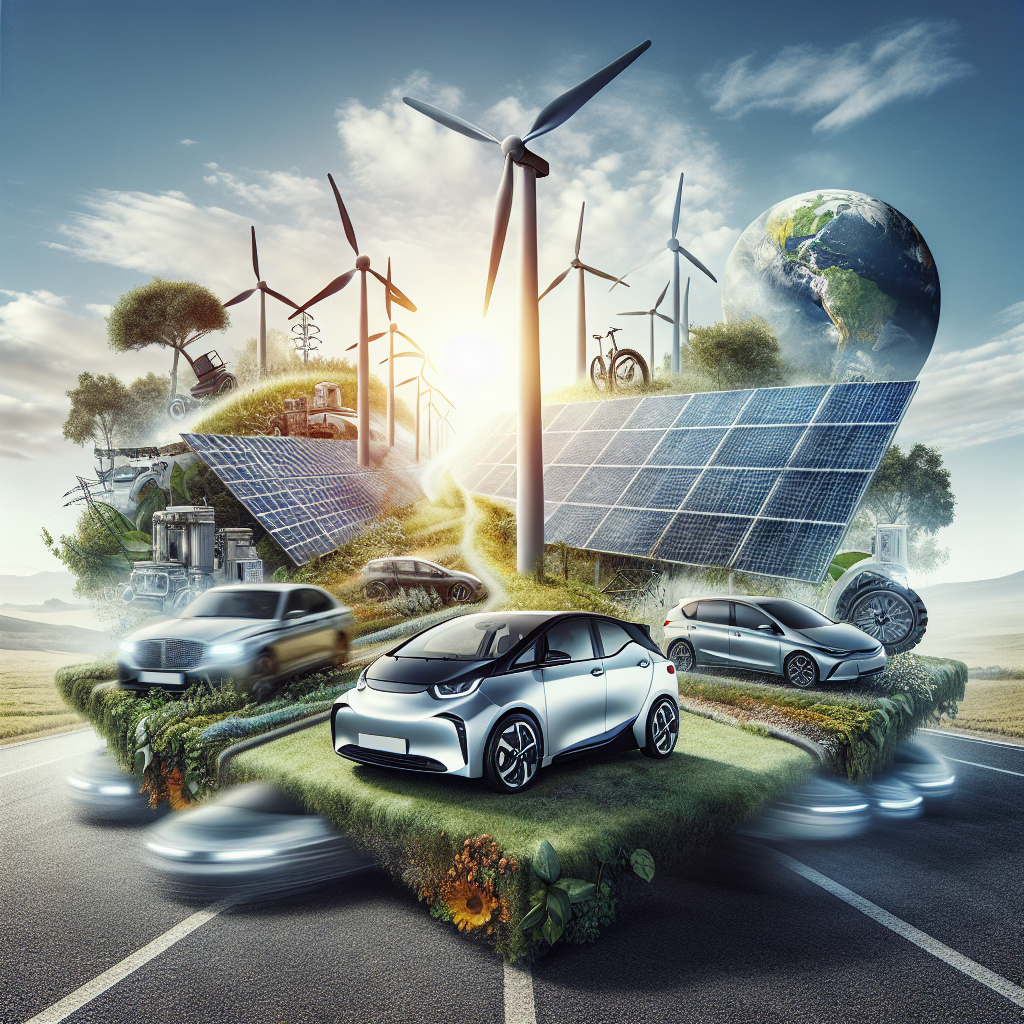The Intersection of Technology and Sustainability in Modern Vehicles
In recent years, the automotive industry has witnessed a paradigm shift towards integrating technology with sustainability. This evolution is driven by a growing global awareness of environmental concerns, stringent government regulations, and a societal push towards green consumerism. Modern vehicles are now at the forefront of this transformation, embodying the convergence of cutting-edge technology and sustainable practices. This article explores the myriad ways in which these two domains intersect to create automobiles that are not only technologically advanced but also environmentally friendly.
The Role of Electric Vehicles (EVs)
At the core of this intersection are Electric Vehicles (EVs), which have become synonymous with the future of sustainable transportation. Unlike their gasoline-powered counterparts, EVs emit no tailpipe pollutants, significantly reducing the carbon footprint of individual mobility. Advances in battery technology, primarily through improvements in lithium-ion batteries, have enhanced the range and efficiency of EVs, making them a viable option for everyday use. Moreover, the integration of regenerative braking systems further improves energy efficiency, capturing kinetic energy typically lost during braking and converting it back into usable electricity.
Autonomous Driving Technologies
Autonomous driving technologies represent another significant leap towards sustainability. By optimizing driving patterns and reducing traffic congestion, self-driving cars promise to lower fuel consumption and emissions. These vehicles can calculate the most efficient routes, drive at optimal speeds, and avoid unnecessary idling, collectively contributing to a reduction in carbon emissions. Furthermore, the potential for autonomous vehicles to function within shared mobility systems can lead to a decrease in the overall number of vehicles on the road, further promoting environmental sustainability.
Connectivity and the Internet of Things (IoT)
The integration of IoT in modern vehicles has opened up new avenues for enhancing sustainability. Connected cars can provide real-time data on traffic conditions, weather, and road terrain, allowing drivers to adjust their routes and driving habits to conserve fuel. Moreover, IoT-enabled vehicles can communicate with smart city infrastructure to optimize traffic flow and reduce congestion, thereby lowering emissions. Additionally, the data collected from connected vehicles can help in planning more efficient public transportation systems and infrastructure improvements.
Lightweight Materials and Aerodynamic Design
The pursuit of sustainability in the automotive industry has also led to innovations in vehicle design and materials. The use of lightweight materials such as carbon fiber and aluminum reduces the overall weight of the vehicle, which in turn improves fuel efficiency and battery range in EVs. Similarly, advancements in aerodynamic design minimize air resistance, further enhancing energy efficiency. These technological innovations not only contribute to sustainability but also improve vehicle performance and driving dynamics.
Renewable Energy and Vehicle-to-Grid (V2G) Systems
The integration of renewable energy sources into the EV ecosystem represents a crucial step towards achieving a truly sustainable transportation system. Solar panels and wind turbines can provide green energy for EV charging stations, reducing reliance on fossil fuels. Additionally, Vehicle-to-Grid (V2G) technology allows EVs to feed surplus energy back into the grid during peak demand periods, effectively turning vehicles into mobile energy storage solutions. This bi-directional energy flow not only enhances the sustainability of the power grid but also provides a potential revenue stream for EV owners.
The Impact of Digital Manufacturing
The sustainability of modern vehicles is not just about their operation but also their production. Digital manufacturing technologies, such as 3D printing, allow for more precise and efficient production processes, reducing waste and energy consumption. Moreover, digital simulations can optimize the design process, minimizing the need for physical prototypes and further conserving resources.
FAQs
Q: Are Electric Vehicles (EVs) truly sustainable?
A: Yes, EVs are considered more sustainable than traditional gasoline-powered vehicles as they emit no tailpipe pollutants and have the potential to be powered by renewable energy sources. However, the sustainability of EVs also depends on factors such as the source of the electricity used for charging and the environmental impact of battery production.
Q: Can autonomous vehicles really reduce traffic congestion?
A: Yes, autonomous vehicles have the potential to significantly reduce traffic congestion through optimized routing, smooth driving patterns, and the ability to communicate with other vehicles and infrastructure to maintain optimal traffic flow.
Q: How do connected cars contribute to sustainability?
A: Connected cars contribute to sustainability by providing data that can be used to optimize driving patterns, reduce fuel consumption, and integrate with smart city infrastructure to improve traffic flow and reduce emissions.
Q: What is Vehicle-to-Grid (V2G) technology?
A: Vehicle-to-Grid (V2G) technology allows electric vehicles to connect to the power grid and either draw electricity for charging or return surplus energy back to the grid. This creates a more sustainable and efficient energy ecosystem by utilizing the battery storage capacity of EVs.
Q: Is the manufacturing process of modern vehicles becoming more sustainable?
A: Yes, the manufacturing process of modern vehicles is becoming more sustainable through the use of digital manufacturing technologies such as 3D printing, which reduces waste, and through digital simulations that optimize design and reduce the need for physical prototypes.
The intersection of technology and sustainability in modern vehicles represents a promising avenue towards a greener and more efficient future. Through innovations in electric vehicles, autonomous driving, connectivity, materials science, renewable energy integration, and digital manufacturing, the automotive industry is redefining what it means to be sustainable. As technology continues to evolve, the potential for further advancements in sustainable transportation remains vast, signaling a hopeful trajectory towards environmental stewardship and innovation.

